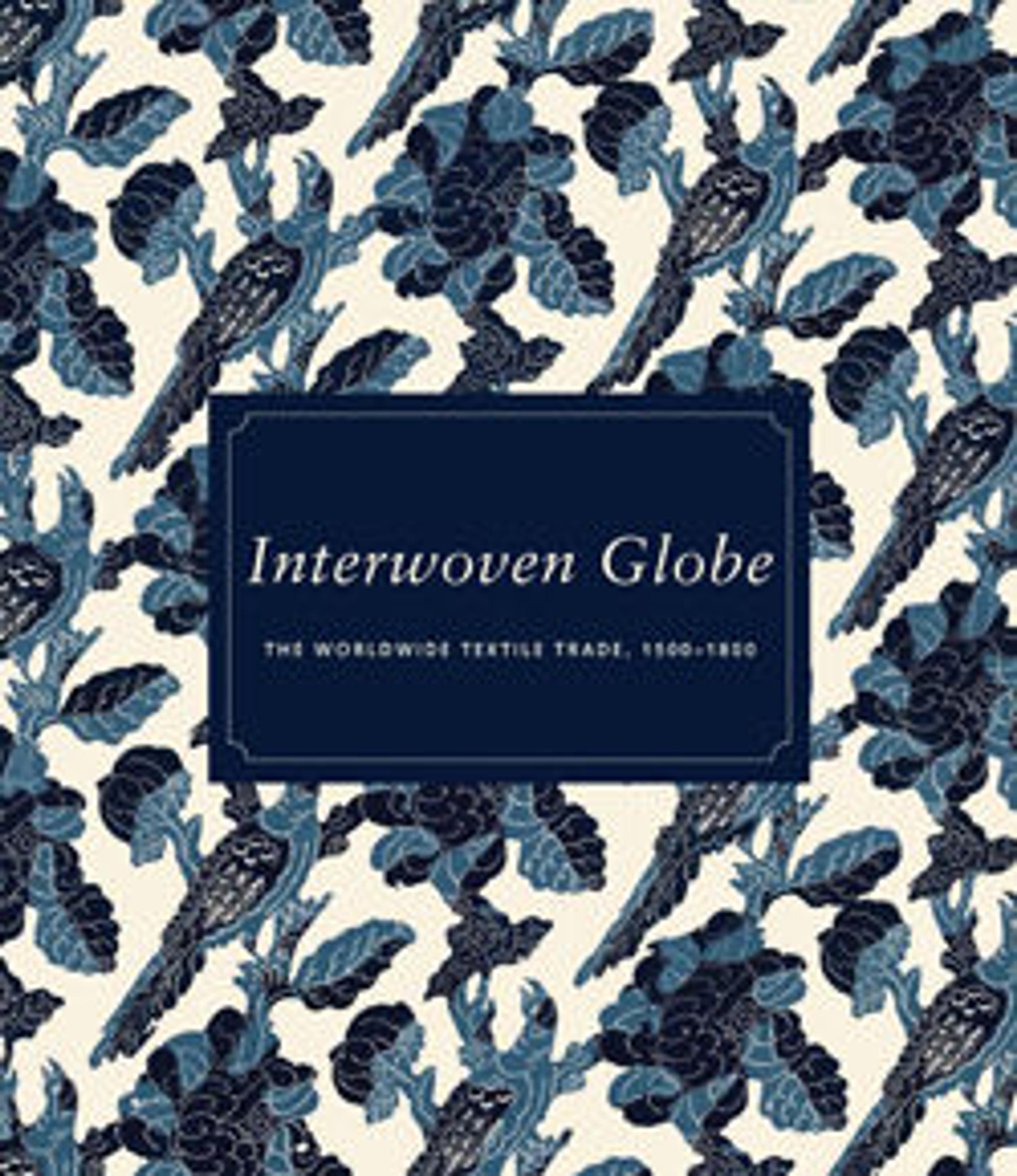Wholecloth quilt
This wholecloth quilt incorporates two English printed cottons, both from about 1785. Although it was owned by a family in New York State, the quilt was most likely made in England and brought over to America by an immigrating family, or imported by a merchant soon after it was made. Eighteenth-century business records show that American merchants ordered bedcoverings of all types to be shipped from England, and individuals could order quilts through London agents to be made to their specifications in terms of color and fabric choice.
The quilt’s two printed cottons are well documented. The top is printed with trails of exotic flowers that may have been copied from the designs of Jean Pillement (1728-1808), who published books of ornaments in what was at the time considered to be "the Chinese manner." These designs were used by textile printers, painters, and decorators. Although Pillement was French, he spent much of his working life in London, where many of his designs were first published. The fabric was copperplate-printed at the Bromley Hall Printworks during the period the firm was being operated by Joseph Talwin and Joseph Foster. It is definitively identified by a paper impression of the print that is in the Victoria & Albert Museum’s collection of Bromley Hall papers. The paper impression is inscribed "P. 13 Talwin & Foster," and, given that Talwin and Foster ran the firm together only between 1785 and 1790, the fabric must have been printed during those years. The backing fabric, made of a less tightly woven cotton, also dates from the 1780s. It is printed with scenes illustrating Captain James Cook’s visits to and death in the Sandwich Islands (the former name of the Hawaiian Islands). Some of the scenes are copied from engravings in Captain Cook’s books about his travels. He was killed by native Hawaiians at Owhyhee on February 14, 1779, and the fabric, which served as one of many memorials to him, was probably printed soon after that date.
American quilts are not usually quilted with the stitching patterns seen on this piece; its ornate panels and fan shapes are far more common to English quilts, another reason we assume that the quilt was made in England. Unfortunately, however, we have no conclusive provenance for the work. When an inquiry was made in this regard, one member of the donor’s family wrote that Mrs. Getman received the quilt when it was used as a protective packing wrapped around a sewing machine shipped to her by a cousin in Upstate New York. Mrs. Getman realized the value of this special eighteenth-century work and donated it to the Museum.
The quilt’s two printed cottons are well documented. The top is printed with trails of exotic flowers that may have been copied from the designs of Jean Pillement (1728-1808), who published books of ornaments in what was at the time considered to be "the Chinese manner." These designs were used by textile printers, painters, and decorators. Although Pillement was French, he spent much of his working life in London, where many of his designs were first published. The fabric was copperplate-printed at the Bromley Hall Printworks during the period the firm was being operated by Joseph Talwin and Joseph Foster. It is definitively identified by a paper impression of the print that is in the Victoria & Albert Museum’s collection of Bromley Hall papers. The paper impression is inscribed "P. 13 Talwin & Foster," and, given that Talwin and Foster ran the firm together only between 1785 and 1790, the fabric must have been printed during those years. The backing fabric, made of a less tightly woven cotton, also dates from the 1780s. It is printed with scenes illustrating Captain James Cook’s visits to and death in the Sandwich Islands (the former name of the Hawaiian Islands). Some of the scenes are copied from engravings in Captain Cook’s books about his travels. He was killed by native Hawaiians at Owhyhee on February 14, 1779, and the fabric, which served as one of many memorials to him, was probably printed soon after that date.
American quilts are not usually quilted with the stitching patterns seen on this piece; its ornate panels and fan shapes are far more common to English quilts, another reason we assume that the quilt was made in England. Unfortunately, however, we have no conclusive provenance for the work. When an inquiry was made in this regard, one member of the donor’s family wrote that Mrs. Getman received the quilt when it was used as a protective packing wrapped around a sewing machine shipped to her by a cousin in Upstate New York. Mrs. Getman realized the value of this special eighteenth-century work and donated it to the Museum.
Artwork Details
- Title: Wholecloth quilt
- Date: ca. 1790
- Geography: Probably made in England
- Culture: British, probably
- Medium: Cotton
- Dimensions: 92 x 77 1/2 in. (233.7 x 196.9 cm)
- Credit Line: Gift of Ellen H. Getman, in memory of her husband, Frederick Hutton Getman, 1945
- Object Number: 45.145
- Curatorial Department: The American Wing
More Artwork
Research Resources
The Met provides unparalleled resources for research and welcomes an international community of students and scholars. The Met's Open Access API is where creators and researchers can connect to the The Met collection. Open Access data and public domain images are available for unrestricted commercial and noncommercial use without permission or fee.
To request images under copyright and other restrictions, please use this Image Request form.
Feedback
We continue to research and examine historical and cultural context for objects in The Met collection. If you have comments or questions about this object record, please complete and submit this form. The Museum looks forward to receiving your comments.
